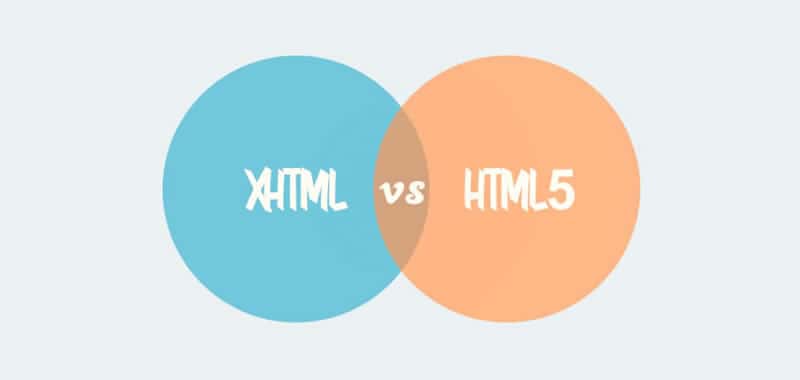Difference and evolution of the HTML, XHTML & HTML5 versions
The goal of HTML5 and its related standards is to provide a set of powerful tools to develop applications and websites.

HTML has evolved in new and unexpected ways. Recently, the situation has become complicated.
HTML is the original language of the Web. The last completed version (4.01) was formalized at the end of 1999.
In the last decade it has been gradually replaced by a similar but modernized version called XHTML (Extensible HyperText Markup Language, Extensible Language of Hypertext Marking).
NOTE:
As XHTML is a variant of HTML and since this was the original standard of the Web, it is often said that all pages are written in HTML. When used in this way, the term, in reality, means any version of HTML or XHTML.
Let's see the complicated part. The version of XHTML currently used is 1.0 or (less common) 1.1
The programmers had to replace both by an even more recent standard called XHTML 2.
However, the developers of XHTML 2 were lost in the attempt.
"They created a philosophically pure standard but practically unusable."
Web programmers and manufacturers of major browsers were scared of the strict nature of XHTML 2 and the fact of its lack of inverse compatibility with existing Web pages.
That is, you could not convert one made in XHTML 1.0 to a new XHTML 2.
Moreover, the XHTML 2 standard lacked the new features that many Web programmers, including creators of ultra-complex applications, required.
The final blow to XHTML 2 came when a group of competitors began to present the initial versions of a standard called HTML5.
Although novel, different and only admitted in the most modern browsers, has generated much interest.
In fact, W3C (the standards organization officially responsible for HTML and XHTML) has recently abandoned its work with the XHTML 2 standard and has begun to formalize HTML5, making it official: HTML5 is the future of the Web.
NOTE:
There is no space between HTML and 5 in HTML5. It is an error of the name of the standard.
The HTML5 designers were smart because they made all the functions that XHTML supports compatible today, which means that you can create documents with this language right now, without the need for new features that browsers still do not recognize.
Everything will work perfectly. Best of all, it will be ready for a not-so-distant future, in which new browsers will colonize the Earth and will be able to start using the attractive exclusive features of HTML5.
NOTE:
HTML5 accepts everything that XHTML supports, with no need for changes. However, the syntax of XHTML is stricter than that of HTML5, which is why it accepts certain practices that XHTML did not accept. Web programmers can not agree on whether these practices are appropriate for an inappropriate style or simply useful solutions.
Familiarizing yourself with HTML5 can be a challenge. Part of the problem is that the word "HTML5" includes the latest version of the HTML language along with numerous emerging standards that are still under development.
For everything to be more interesting, some of them work with the most used current browsers and others have not yet been implemented even in the latest versions of HTML5.
Interestingly, this language only offers certain novelties to the standard family of labels.
Many of them provide Web browsers with search engines and other automated tools, in addition to the structural information about their Web pages. For example, you can use them to indicate which section of your page contains the navigation links.
HTML5 also offers a new way to add video elements to your website without the need for an add-on, as is the case in many current browsers.
The main objective of HTML5 and its related standards is to provide a set of powerful tools to develop applications and Web pages with which to interact.
For example, it includes a canvas to draw in two dimensions, a function to delimit the geographic location of the visitors and a technique so that the interactive pages work without connection.
All these tools are the forefront of Web design and are not compatible with versions of Internet Explorer prior to 9.
CITE ARTICLE
For homework, research, thesis, books, magazines, blogs or academic articles
APA Format Reference:
Delgado, Hugo. (2019).
Difference and evolution of the HTML, XHTML & HTML5 versions.
Retrieved Nov 09, 2025, from
https://disenowebakus.net/en/html-xhtml-html5







Thank you! helped me with my homework